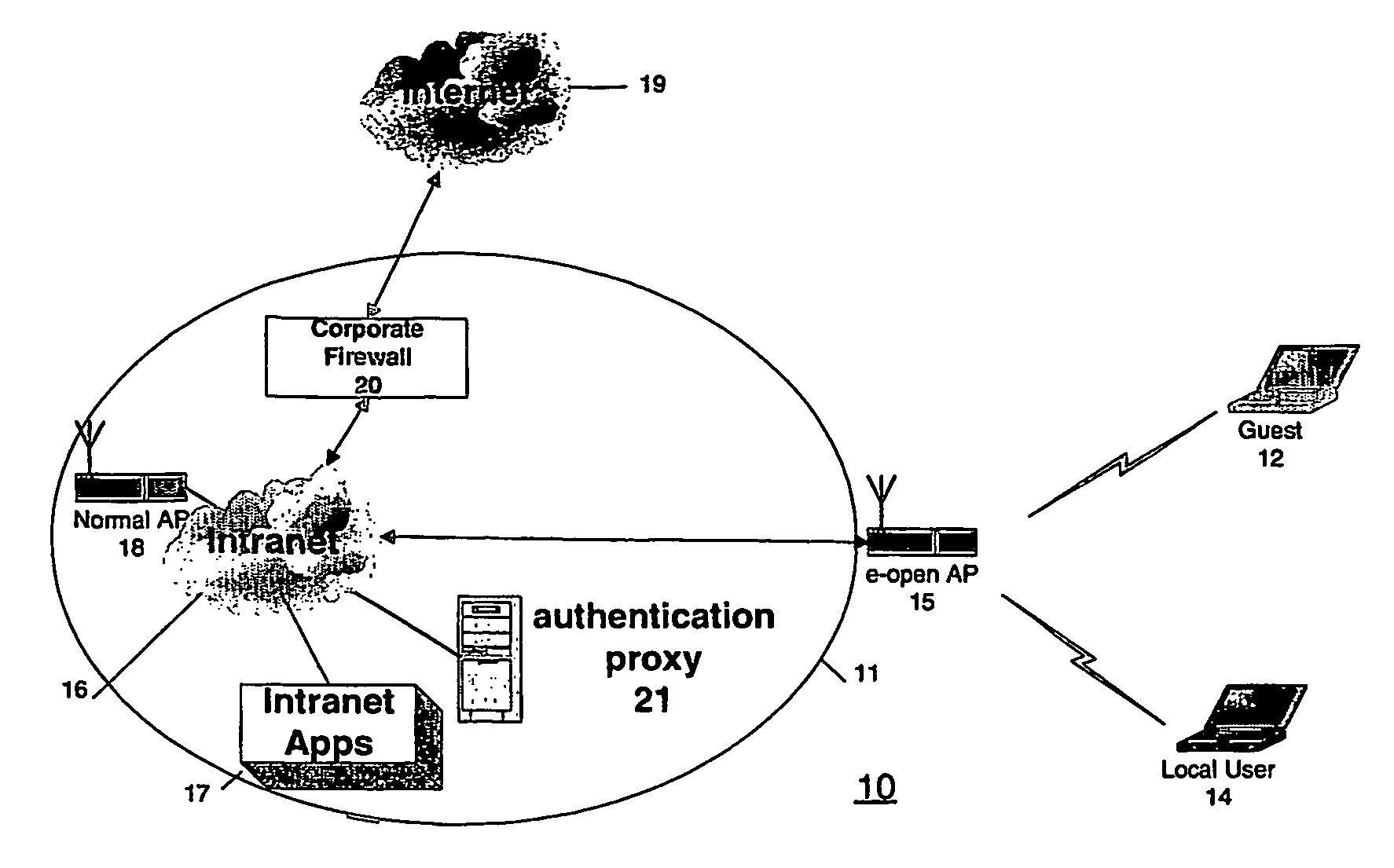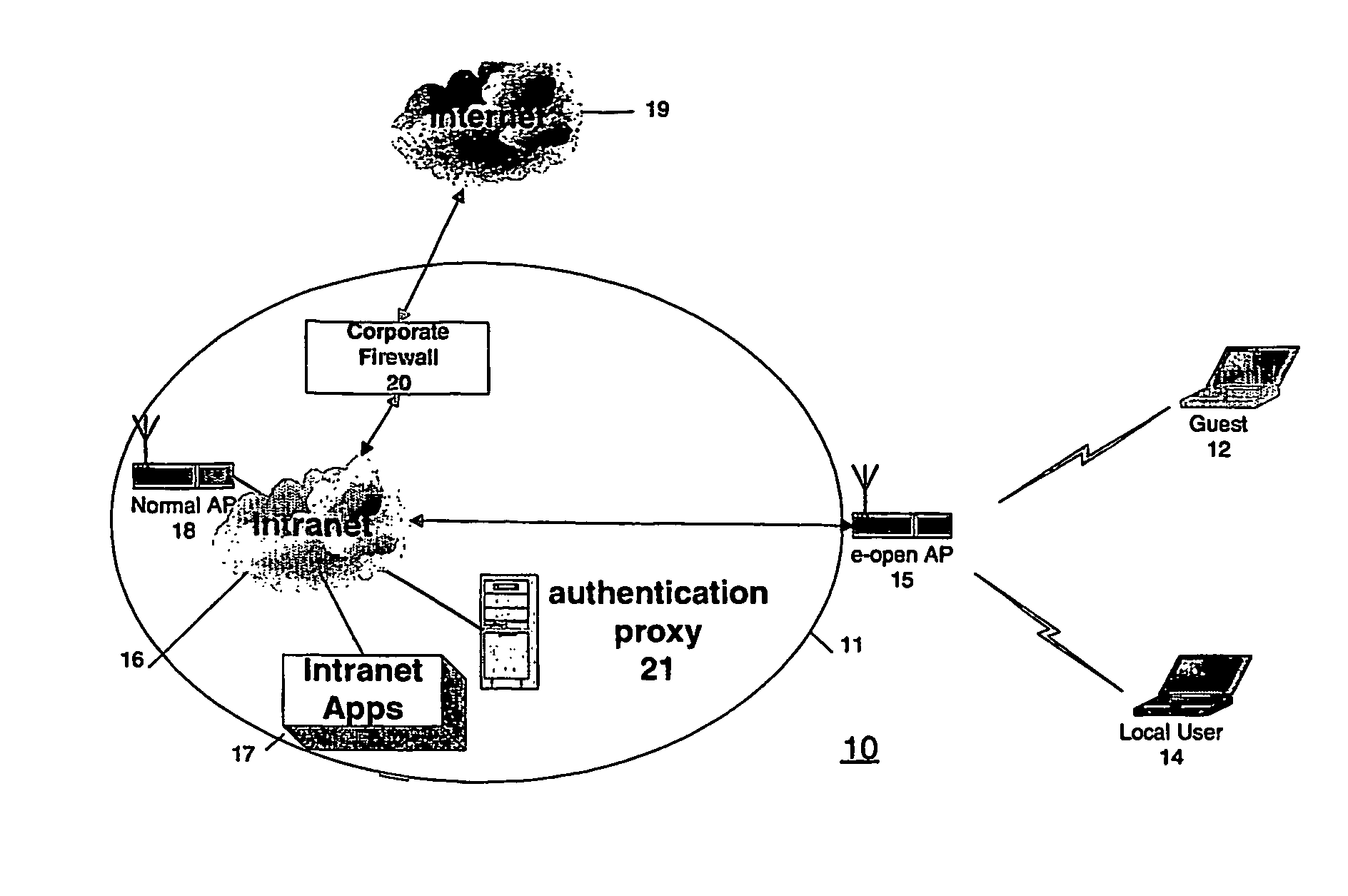Techniques for offering seamless accesses in enterprise hot spots for both guest users and local users
- Summary
- Abstract
- Description
- Claims
- Application Information
AI Technical Summary
Benefits of technology
Problems solved by technology
Method used
Image
Examples
Embodiment Construction
[0008]FIG. 1 depicts an enterprise guest host architecture 10 that includes a wireless Local Area Network (LAN) 11 for offering seamless wireless access to both a guest user 12 and a local user 14 through an enterprise-guesting Access Point (AP) 15 that can accommodate both local users and guests. For purposes of discussion, the guest user 12 constitutes a party that has no service relationship with the wireless LAN 11, i.e., the party isn't registered with the wireless LAN and thus lacks the same privileges of a local user 14. Although FIG. 1 depicts a single guest 12 and single local user 14, additional guests and / or users can access the access point 15 or other such access points (not shown) in accordance with the present principles.
[0009]For security reasons, traffic from guests should remain segregated from the traffic of local users. In other words, each guest 12 should not have the same privileges as each local user 14. Such local privileges could include access via a corpora...
PUM
 Login to View More
Login to View More Abstract
Description
Claims
Application Information
 Login to View More
Login to View More - R&D
- Intellectual Property
- Life Sciences
- Materials
- Tech Scout
- Unparalleled Data Quality
- Higher Quality Content
- 60% Fewer Hallucinations
Browse by: Latest US Patents, China's latest patents, Technical Efficacy Thesaurus, Application Domain, Technology Topic, Popular Technical Reports.
© 2025 PatSnap. All rights reserved.Legal|Privacy policy|Modern Slavery Act Transparency Statement|Sitemap|About US| Contact US: help@patsnap.com


